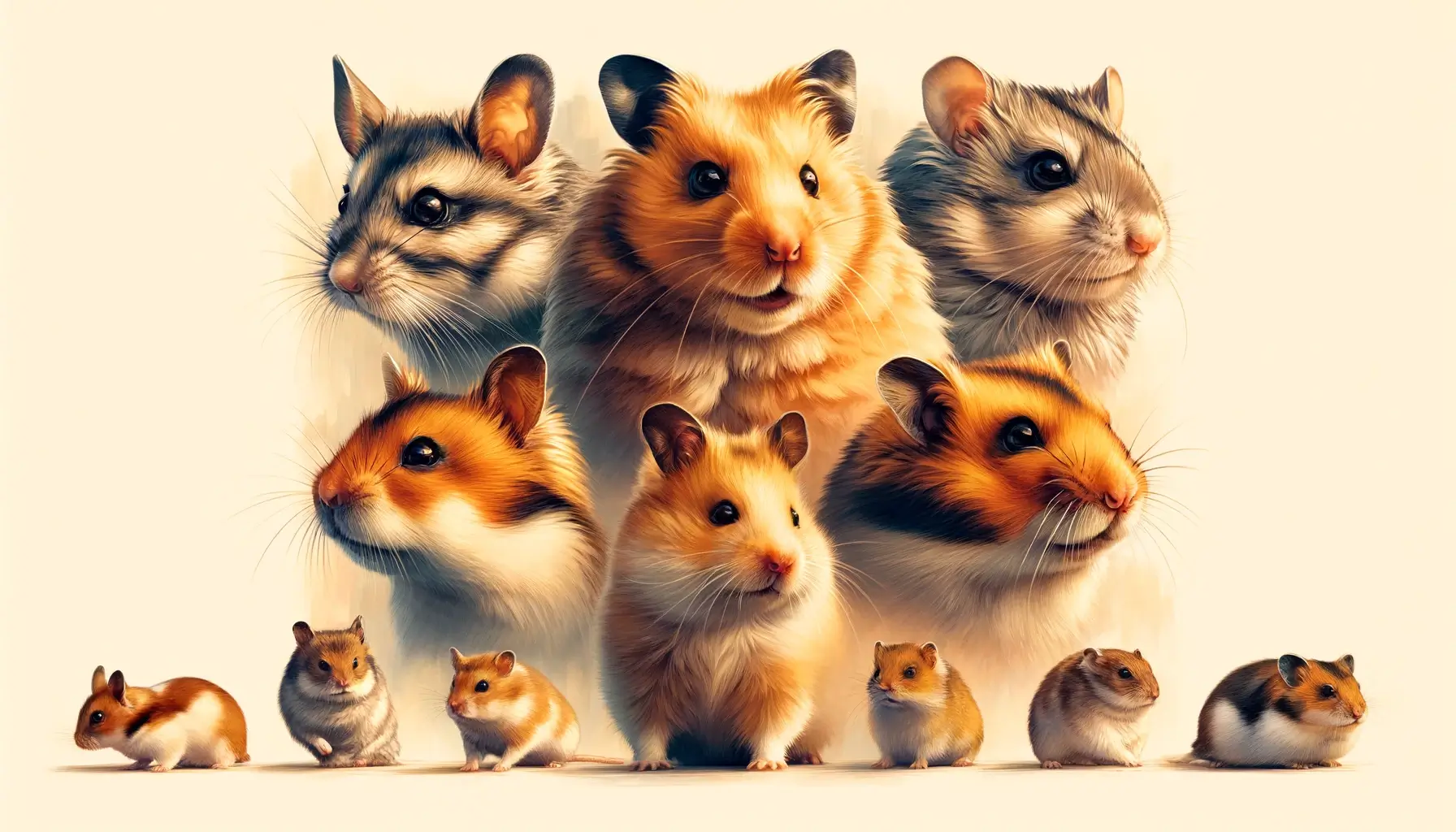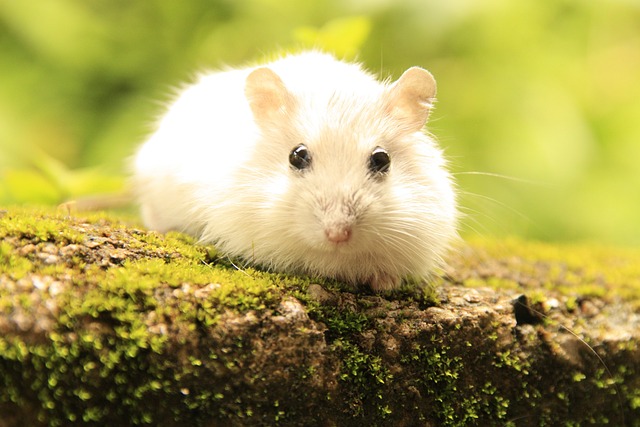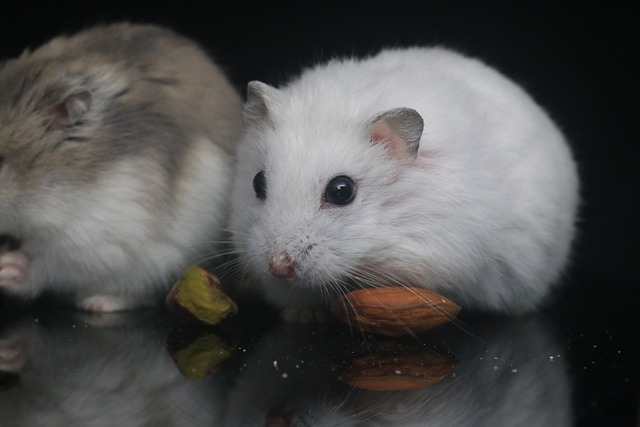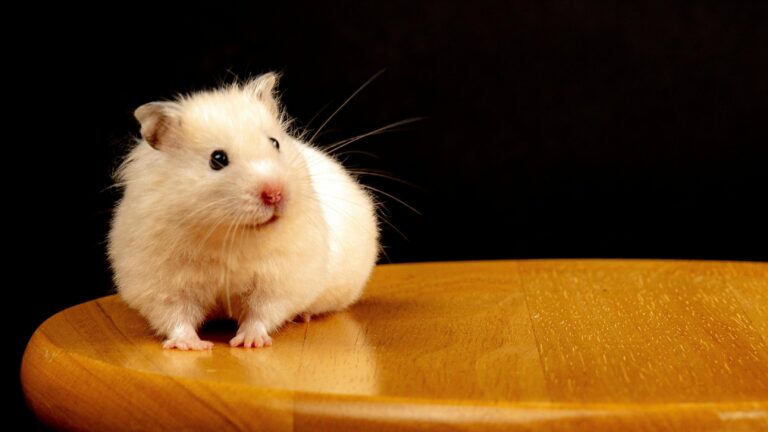Top 4 Best Types Of Hamsters – Hamsters.pk
The Syrian hamster, also known as the Golden hamster or Teddy Bear hamster, is one of the most popular pet hamster species. These adorable little creatures have captured the hearts of many pet enthusiasts worldwide due to their gentle nature and charming appearance. In this article, we will explore what makes the Syrian hamster a fantastic pet and why they are often referred to as “gentle giants.”
Physical Characteristics:
Syrian hamsters are the largest of the pet hamster species, measuring between 5 to 7 inches in length when fully grown. They have a sturdy, round body with short, stocky legs and a short tail. Their coat is thick and comes in various colors, including golden, cinnamon, cream, and black. They have large, round eyes and small, erect ears that add to their endearing appearance.
Temperament:
One of the most appealing aspects of Syrian hamsters is their gentle and friendly temperament. They are generally good-natured and can form strong bonds with their owners if handled regularly and with care. Unlike some other hamster species, Syrian hamsters are solitary animals and should be kept in individual cages to prevent fighting and stress.
Housing Requirements:
To ensure your Syrian hamster remains healthy and happy, provide them with a spacious cage that offers ample room for exercise and exploration. A wire cage with a solid bottom is ideal, as it allows for proper ventilation and prevents the hamster from escaping. Include a cozy sleeping area, such as a small hideout or nest box, and provide plenty of bedding material for burrowing and nesting.
Diet:
Syrian hamsters are omnivores and require a balanced diet to thrive. Commercial hamster food pellets should make up the majority of their diet, supplemented with fresh vegetables, fruits, and occasional protein sources like hard-boiled eggs or mealworms. Always ensure that fresh, clean water is available in a water bottle attached to the cage.
Exercise and Enrichment:
To keep your Syrian hamster physically and mentally stimulated, provide them with an exercise wheel and various toys. Hamsters love to run and can cover several miles in a single night on their wheel. Offer chew toys made of wood or other safe materials to help keep their continuously growing teeth trimmed and healthy.
Handling and Socialization:
Syrian hamsters can be gently handled and socialized with regular interaction. Begin by allowing your hamster to become comfortable with your presence, then slowly introduce your hand into the cage, offering treats to encourage positive associations. Once your hamster is comfortable being handled, you can let them explore in a safe, enclosed area under close supervision.
Health Considerations:
Syrian hamsters are generally hardy animals, but they can be prone to certain health issues such as respiratory infections, dental problems, and obesity. Regular check-ups with a veterinarian specializing in exotic pets can help prevent and address any potential health concerns.
In conclusion, the Syrian hamster’s gentle nature, adorable appearance, and relatively low-maintenance care requirements make them an ideal pet for many households. By providing a proper diet, a spacious and well-equipped home, and plenty of love and attention, you can ensure that your gentle giant remains a happy and healthy companion for years to come.
Dwarf Campbell Russian Hamster: Small in Size, Big in Personality
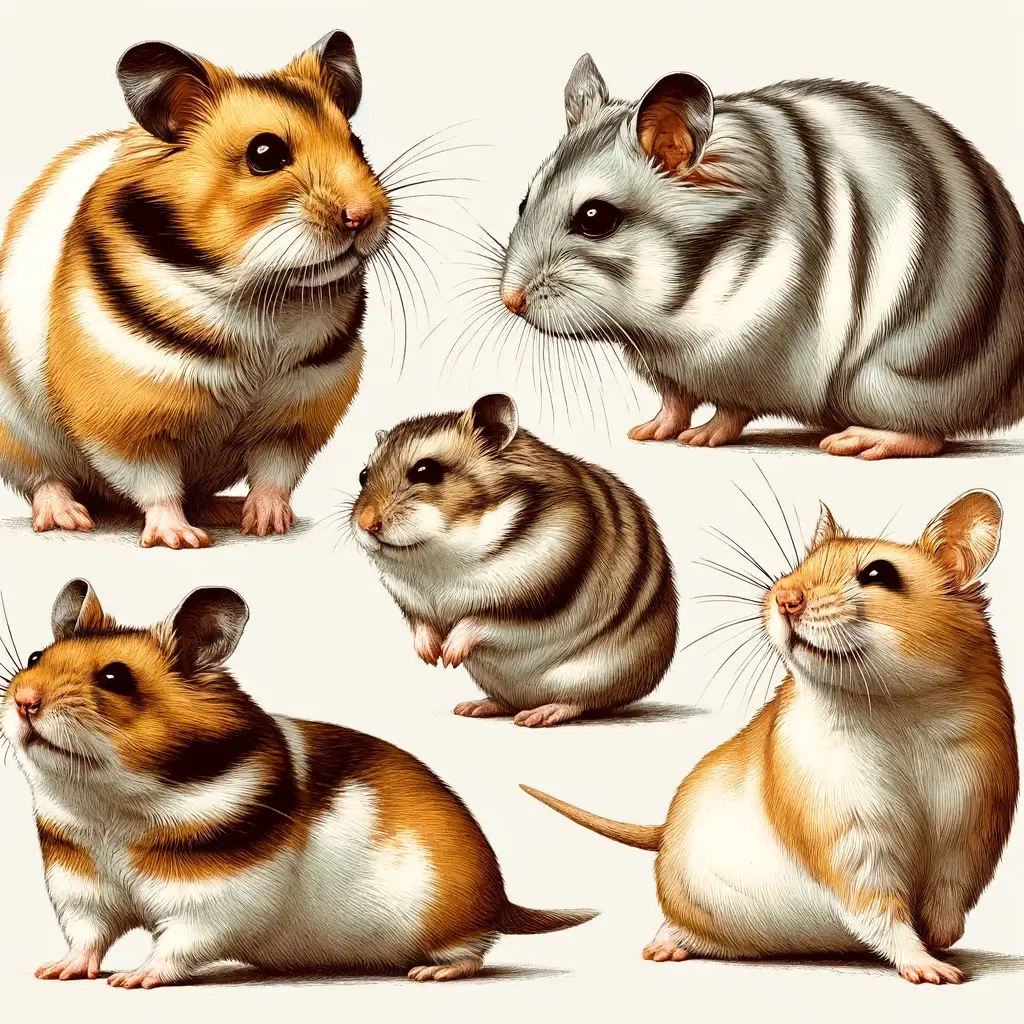
The Dwarf Campbell Russian hamster, also known as the Campbell’s dwarf hamster or simply the Russian hamster, is a popular pet choice for those looking for a small, adorable, and lively companion. Despite their tiny stature, these hamsters are known for their big personalities and energetic nature. In this article, we will delve into the characteristics, care requirements, and unique traits that make the Dwarf Campbell Russian hamster a beloved pet.
Physical Characteristics:
Dwarf Campbell Russian hamsters are one of the smallest pet hamster species, measuring approximately 3 to 4 inches in length when fully grown. They have a compact, rounded body with short legs and a short tail. Their coat is soft and dense, coming in various colors such as gray, brown, white, and combinations of these shades. They have large, expressive eyes and small, rounded ears that add to their endearing appearance.
Temperament and Sociability:
Known for their energetic and curious nature, Dwarf Campbell Russian hamsters are always on the move, exploring their surroundings and engaging in playful activities. They are generally friendly and can form bonds with their owners, but they may be slightly more skittish compared to larger hamster species. These hamsters are social creatures and can be kept in same-sex pairs or small groups if introduced at a young age, provided there is ample space and resources to prevent territorial disputes.
Housing Requirements:
Despite their small size, Dwarf Campbell Russian hamsters require a spacious cage to accommodate their active lifestyle. A wire cage with a solid bottom is recommended, with a minimum size of 24 inches by 12 inches and at least 12 inches in height. Include a cozy sleeping area, such as a small hideout or nest box, and provide plenty of bedding material for burrowing and nesting. It is essential to ensure that the cage bars are spaced closely enough to prevent escape, as these tiny hamsters can squeeze through small openings.
Diet:
Dwarf Campbell Russian hamsters have similar dietary requirements to other hamster species. Provide them with a balanced diet consisting of commercial hamster food pellets, fresh vegetables, and occasional fruits as treats. Avoid sugary and fatty foods, as they can lead to obesity and health issues. Always ensure that fresh, clean water is readily available in a water bottle attached to the cage.
Exercise and Enrichment:
These energetic little hamsters require plenty of opportunities for exercise and mental stimulation. Provide them with an appropriately sized exercise wheel to run on, as well as various toys such as tunnels, climbing structures, and chew toys. Dwarf Campbell Russian hamsters love to explore, so offering a safe, enclosed playpen outside of their cage for supervised playtime can greatly enrich their daily lives.
Health Considerations:
Like all pet rodents, Dwarf Campbell Russian hamsters can be prone to certain health issues, such as respiratory infections, dental problems, and diabetes. Regular check-ups with a veterinarian experienced in exotic pet care can help prevent and address any potential health concerns. Maintain a clean and hygienic living environment, and monitor your hamster’s appetite, activity level, and overall condition to catch any signs of illness early on.
In conclusion, the Dwarf Campbell Russian hamster’s lively personality, social nature, and adorable appearance make them a fantastic pet for those who can provide them with proper care, attention, and a suitably sized living space. With their big personalities packed into a tiny body, these hamsters are sure to bring joy and entertainment to their owners’ lives.
Winter White Dwarf Hamster: A Cute and Cuddly Companion
The Winter White Dwarf hamster, also known as the Winter White Russian Dwarf hamster or the Djungarian hamster, is a charming and adorable pet that has captured the hearts of many small animal enthusiasts. These tiny, fluffy creatures are known for their endearing appearance and gentle nature, making them a popular choice for those seeking a lovable and low-maintenance companion. In this article, we will explore the unique characteristics, care requirements, and delightful traits of the Winter White Dwarf hamster.
Physical Characteristics:
Winter White Dwarf hamsters are one of the smallest hamster species, typically measuring around 3 to 4 inches in length when fully grown. They have a compact, rounded body with short legs and a short tail, which is barely visible beneath their dense fur. Their most distinctive feature is their soft, fluffy coat that comes in shades of gray, white, and sometimes with a hint of light brown. In the wild, these hamsters are known to change their coat color to white during winter months, hence their name.
Temperament and Sociability:
Known for their gentle and tolerant nature, Winter White Dwarf hamsters make excellent pets for both experienced and first-time hamster owners. They are generally calm and easy to handle, rarely biting when properly socialized. These hamsters are social creatures and can be kept in same-sex pairs or small groups if introduced at a young age, provided there is ample space and resources to prevent territorial disputes. However, they are also content as solitary pets and will thrive with regular interaction and attention from their owners.
Housing Requirements:
Despite their small size, Winter White Dwarf hamsters require a spacious cage to ensure their comfort and well-being. A wire cage with a solid bottom is recommended, with a minimum size of 24 inches by 12 inches and at least 12 inches in height. Provide a cozy sleeping area, such as a small hideout or nest box, and fill the cage with plenty of soft bedding material for burrowing and nesting. These hamsters are skilled climbers, so including various levels and platforms in their cage will help keep them mentally stimulated and physically active.
Diet:
Winter White Dwarf hamsters have similar dietary needs to other hamster species. Offer a balanced diet consisting of commercial hamster food pellets, fresh vegetables, and occasional fruits as treats. Be mindful of their small size when portioning their food, and avoid overfeeding to prevent obesity. Always provide fresh, clean water in a water bottle attached to the cage, and replace it daily.
Exercise and Enrichment:
To keep your Winter White Dwarf hamster healthy and happy, provide them with ample opportunities for exercise and mental stimulation. Include an appropriately sized exercise wheel in their cage, as running is a natural and essential activity for hamsters. Offer various toys, such as tunnels, climbing structures, and chew toys, to keep them engaged and entertained. Supervised playtime outside of their cage in a secure, enclosed area can also greatly enrich their daily lives.
Health Considerations:
Like all pet rodents, Winter White Dwarf hamsters can be prone to certain health issues, such as respiratory infections, dental problems, and skin irritations. Regular check-ups with a veterinarian experienced in exotic pet care can help prevent and address any potential health concerns. Maintain a clean and hygienic living environment, and regularly monitor your hamster’s appetite, activity level, and overall condition to catch any signs of illness early on.
In conclusion, the Winter White Dwarf hamster’s gentle nature, adorable appearance, and social compatibility make them a fantastic pet for those seeking a cute and cuddly companion. By providing them with a spacious home, a balanced diet, and plenty of love and attention, you can ensure that your tiny furry friend remains happy and healthy for years to come.
Chinese Hamster: The Energetic and Entertaining Acrobat
The Chinese hamster, also known as the Chinese striped hamster or the Chinese dwarf hamster, is a lively and entertaining pet that has gained popularity among small animal enthusiasts. These adorable little creatures are known for their energetic nature, acrobatic skills, and unique appearance. In this article, we will explore the characteristics, care requirements, and delightful traits that make the Chinese hamster a fascinating and rewarding pet.
Physical Characteristics:
Chinese hamsters are small, slender rodents that typically measure around 3 to 4 inches in length, with a long, slim body and a relatively long tail compared to other hamster species. Their most distinctive feature is the dark stripe running down their back, which contrasts with their otherwise grayish-brown or reddish-brown fur. They have large, expressive eyes and small, erect ears that add to their alert and attentive appearance.
Temperament and Activity Level:
Known for their energetic and curious nature, Chinese hamsters are always on the move, exploring their surroundings and engaging in playful activities. They are natural acrobats, often seen climbing, jumping, and balancing on various objects in their cage. These hamsters are generally friendly but can be slightly more skittish and nippy compared to other hamster species, especially if not handled regularly. With patience and gentle handling, however, they can become quite tame and enjoy interacting with their owners.
Housing Requirements:
Due to their active lifestyle, Chinese hamsters require a spacious cage with plenty of room for exercise and exploration. A wire cage with a solid bottom is recommended, with a minimum size of 24 inches by 12 inches and at least 18 inches in height. Include multiple levels, platforms, and climbing structures to cater to their acrobatic tendencies. Provide a cozy sleeping area, such as a small hideout or nest box, and fill the cage with plenty of bedding material for burrowing and nesting.
Diet:
Chinese hamsters have similar dietary requirements to other hamster species. Offer a balanced diet consisting of commercial hamster food pellets, fresh vegetables, and occasional fruits as treats. Be mindful of their small size when portioning their food, and avoid overfeeding to prevent obesity. Always provide fresh, clean water in a water bottle attached to the cage, and replace it daily.
Exercise and Enrichment:

To keep your Chinese hamster physically and mentally stimulated, provide them with ample opportunities for exercise and playtime. Include an appropriately sized exercise wheel in their cage, as running is a natural and essential activity for hamsters. Offer various toys, such as tunnels, ladders, and chew toys, to keep them engaged and entertained. Supervised playtime outside of their cage in a secure, enclosed area can also greatly enrich their daily lives and strengthen the bond between you and your pet.
Health Considerations:
Like all pet rodents, Chinese hamsters can be prone to certain health issues, such as respiratory infections, dental problems, and skin irritations. Regular check-ups with a veterinarian experienced in exotic pet care can help prevent and address any potential health concerns. Maintain a clean and hygienic living environment, and regularly monitor your hamster’s appetite, activity level, and overall condition to catch any signs of illness early on.
In conclusion, the Chinese hamster’s energetic personality, acrobatic skills, and unique appearance make them an entertaining and rewarding pet for those who can provide them with a suitable living space, a balanced diet, and plenty of interaction and enrichment. With their lively nature and adorable antics, these little acrobats are sure to bring joy and amusement to their owners’ lives.

